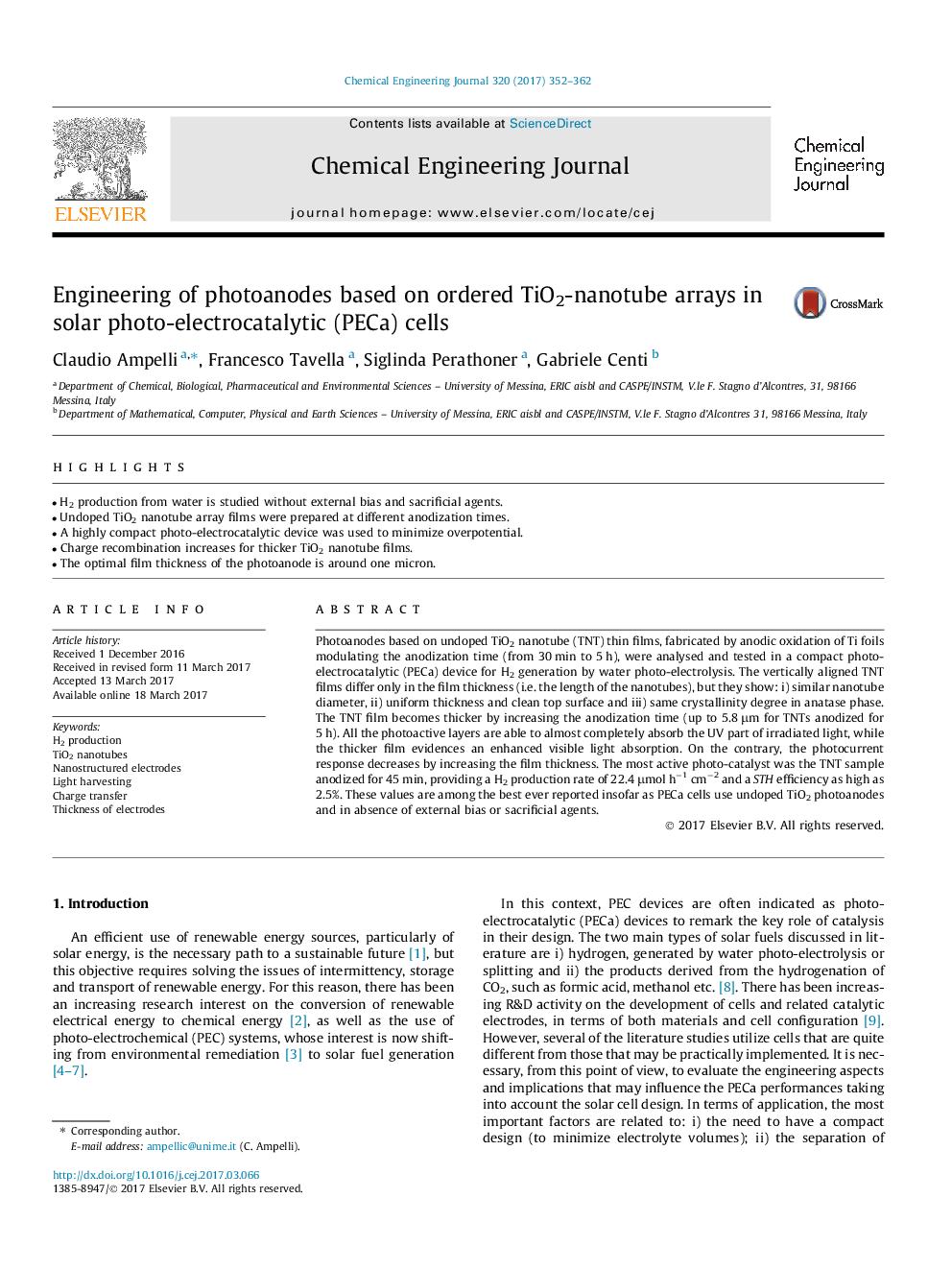| Article ID | Journal | Published Year | Pages | File Type |
|---|---|---|---|---|
| 6465996 | Chemical Engineering Journal | 2017 | 11 Pages |
â¢H2 production from water is studied without external bias and sacrificial agents.â¢Undoped TiO2 nanotube array films were prepared at different anodization times.â¢A highly compact photo-electrocatalytic device was used to minimize overpotential.â¢Charge recombination increases for thicker TiO2 nanotube films.â¢The optimal film thickness of the photoanode is around one micron.
Photoanodes based on undoped TiO2 nanotube (TNT) thin films, fabricated by anodic oxidation of Ti foils modulating the anodization time (from 30 min to 5 h), were analysed and tested in a compact photo-electrocatalytic (PECa) device for H2 generation by water photo-electrolysis. The vertically aligned TNT films differ only in the film thickness (i.e. the length of the nanotubes), but they show: i) similar nanotube diameter, ii) uniform thickness and clean top surface and iii) same crystallinity degree in anatase phase. The TNT film becomes thicker by increasing the anodization time (up to 5.8 μm for TNTs anodized for 5 h). All the photoactive layers are able to almost completely absorb the UV part of irradiated light, while the thicker film evidences an enhanced visible light absorption. On the contrary, the photocurrent response decreases by increasing the film thickness. The most active photo-catalyst was the TNT sample anodized for 45 min, providing a H2 production rate of 22.4 μmol hâ1 cmâ2 and a STH efficiency as high as 2.5%. These values are among the best ever reported insofar as PECa cells use undoped TiO2 photoanodes and in absence of external bias or sacrificial agents.
